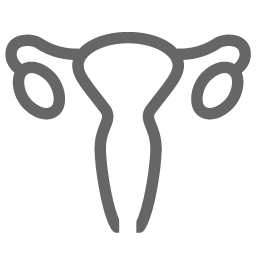Menopausal symptom management – Non-endocrine systemic therapies
Consider second-line treatment with non-endocrine systemic therapies (venlafaxine, desvenlafaxine, paroxetine, escitalopram, clonidine, or gabapentin) at doses shown to be effective in the management of moderate to severe hot flushes or night sweats in women with a history of breast cancer. Women treated with any of these drugs should be monitored for the development of adverse effects which may include sexual dysfunction, gastrointestinal symptoms, anxiety, sleep disturbance, or in rare cases suicidal ideation. Be aware that paroxetine should be avoided in women treated with tamoxifen.
Venlafaxine (37.5 - 75 mg/day) can be considered for the management of moderate to severe vasomotor symptoms in women with a history of breast cancer
Paroxetine (10 - 20 mg/day) can be considered for the management of moderate to severe vasomotor symptoms in women with a history of breast cancer who are not receiving tamoxifen. This recommendation is not generalisable to other SSRIs as there is insufficient evidence in women with a history of breast cancer that they have comparable effects on vasomotor symptoms. Note: Paroxetine interacts with tamoxifen and reduces the serum concentration of tamoxifen and metabolites
Escitalopram (10 - 20 mg/d) can be considered for the management of moderate to severe vasomotor symptoms in women with a history of breast cancer, based on evidence from a general population of menopausal women. Note: - - Escitalopram may reduce the efficacy of tamoxifen by slowing metabolism to the active form. There is little evidence for clinical concern resulting from their concomitant use
Desvenlafaxine (100 - 150 mg/d) can be considered for the management of sleep disturbance in women with a history of breast cancer, based on evidence from a general population of menopausal women. Note: Desvenlafaxine may alter the serum concentration of tamoxifen and metabolites. There is little evidence for clinical concern resulting from their concomitant use
Clonidine (0.10 - 0.15 mg/day) can be considered for the management of moderate to severe vasomotor symptoms in women with a history of breast cancer
Gabapentin (300 - 900 mg/day) can be considered for the management of moderate to severe vasomotor symptoms in women with a history of breast cancer
Body of evidence provides some support for recommendation(s) but care should be taken in its application
Body of evidence can be trusted to guide practice
Body of evidence can be trusted to guide practice in most situations
How this guidance was developed
This recommendation was adapted from the CA 2016 guidelines for the management of menopausal symptoms in women with a history of breast cancer (Australia). Six source recommendations (one for each pharmaceutical treatment) were merged and simplified by removing prescribing details. All six source recommendations were based on a systematic review conducted to 2015: five (venlafaxine, paroxetine, escitalopram, desvenlafaxine and clonidine) were graded ‘A' or 'B' using NHMRC methods and the one for gabapentin was graded 'C' using NHMRC methods by the source guideline authors. A potential NICE (UK, 2009, updated 2018) source recommendation was noted indicating that selective serotonin reuptake inhibitor antidepressants should be avoided in women taking tamoxifen. Paroxetine, fluoxetine, and buproprion, are strong CYP2D6 inhibitors.
Menopausal symptom management – Non-endocrine systemic therapies
Consider second-line treatment with non-endocrine systemic therapies (venlafaxine, desvenlafaxine, paroxetine, escitalopram, clonidine, or gabapentin) at doses shown to be effective in the management of moderate to severe hot flushes or night sweats in women with a history of breast cancer. Women treated with any of these drugs should be monitored for the development of adverse effects which may include sexual dysfunction, gastrointestinal symptoms, anxiety, sleep disturbance, or in rare cases suicidal ideation. Be aware that paroxetine should be avoided in women treated with tamoxifen.
This recommendation was adapted from the CA 2016 guidelines for the management of menopausal symptoms in women with a history of breast cancer (Australia). Six source recommendations (one for each pharmaceutical treatment) were merged and simplified by removing prescribing details. All six source recommendations were based on a systematic review conducted to 2015: five (venlafaxine, paroxetine, escitalopram, desvenlafaxine and clonidine) were graded ‘A' or 'B' using NHMRC methods and the one for gabapentin was graded 'C' using NHMRC methods by the source guideline authors. A potential NICE (UK, 2009, updated 2018) source recommendation was noted indicating that selective serotonin reuptake inhibitor antidepressants should be avoided in women taking tamoxifen. Paroxetine, fluoxetine, and buproprion, are strong CYP2D6 inhibitors.

